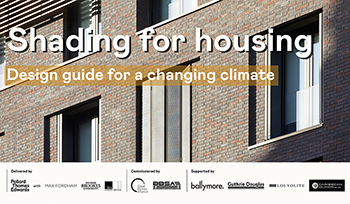The Louvre
The Louvre is a museum of art and antiquities located on the Right bank of the Seine in Paris. Covering an area of 60,600 sq. m (652,300 sq. ft), and with more than 380,000 objects and 35,000 works of art, the Louvre is the largest museum in the world.
It first opened as a museum in 1793, during the period of the French Revolution known as the Reign of Terror. It was said that the act of opening an art museum to the general public in a building that had once been a royal palace was inherently revolutionary.
The museum houses some of the most famous and valuable pieces of art in the world, including the Venus de Milo statue, Leonardo Di Vinci's Mona Lisa, and The Last Supper.
In architectural terms, the Louvre is made of cut stone and is a vast complex of wings and pavilions on four main levels. Despite appearing to be unified, it is in fact the result of many phases of building, modification, destruction, and restoration that took place over several centuries.
The museum is housed in the Louvre Palace which was originally built in the late 12th century under Phillip II. It remained a residence of the French kings until 1682. The Louvre was altered frequently throughout the Middle Ages, being converted into a residence in the 14th century by Charles V, and being renovated into the French Renaissance style by Francis I in 1546.
The architect Pierre Lescot was one of the first to apply pure classical ideas in France, making the Louvre one of the most influential buildings of the Renaissance. ITs distinctive double-pitched mansard roof was the source of inspiration for many 18th-century buildings in Paris, as well as throughout Europe and the United States.
The buildings of the Louvre were enlarged during the 19th century. Towards the end of the Paris Commune, a socialist government established in 1871 that only lasted a few months, the Tuilleries Palace, the Louvre's west wing, burnt down shortly before the French army retook the city. The building stood for a few years before eventually being demolished and replaced with the Tuilleries gardens and the central courtyard of the contemporary Louvre.
For the bicentennial celebrations of the French Revolution in 1989, President Mitterrand commissioned the Chinese-American architect Leoh Ming Pei to build the Louvre Pyramid. Although controversial when first unveiled, it has since come to be accepted as a successful modernist juxtaposition to the classical architecture that surrounds it. Made out of steel and glass, it was designed to the same proportions as the pyramid of Cheops, reaching a height of 20.6 m and with a square base of 35 m. The pyramid's faces are covered by nearly 700 panes of glass.
The Louvre is one of the major tourist attractions of Paris, receiving an estimated 9.6 million visitors a year.
[edit] Related articles on Designing Buildings Wiki
- British Museum.
- Building of the week series.
- Centre Pompidou.
- City Hall, London.
- Conservation and storage facility for the Musée du Louvre
- Dali Theatre and Museum.
- Eiffel Tower.
- Florence Cathedral.
- Guggenheim Museum, Bilbao.
- Leaning Tower of Pisa.
- Mansard roof.
- Roman Colosseum.
- Royal Albert Hall.
- RSHP conservation and collection facility for the Louvre, France.
- Sage Gateshead.
- Solomon R. Guggenheim Museum.
- Titanic Museum.
- The Gherkin.
- The White House.
- Villa Savoye.
Featured articles and news
Editor's broadbrush view on forms of electrical heating in context.
The pace of heating change; BSRIA market intelligence
Electric Dreams, Boiler Realities.
New President of ECA announced
Ruth Devine MBE becomes the 112th President of the Electrical Contractors Association.
New CIAT Professional Standards Competency Framework
Supercedes the 2019 Professional Standards Framework from 1 May 2025.
Difficult Sites: Architecture Against the Odds
Free exhibition at the RIBA Architecture Gallery until 31 May.
PPN 021: Payment Spot Checks in Public Sub-Contracts
Published following consultation and influence from ECA.
Designing Buildings reaches 20,000 articles
We take a look back at some of the stranger contributions.
Lessons learned from other industries.
The Buildings of the Malting Industry. Book review.
Conserving places with climate resilience in mind.
Combating burnout.
The 5 elements of seiri, seiton, seiso, seiketsu and shitsuke.
Shading for housing, a design guide
A look back at embedding a new culture of shading.
The Architectural Technology Awards
The AT Awards 2025 are open for entries!
ECA Blueprint for Electrification
The 'mosaic of interconnected challenges' and how to deliver the UK’s Transition to Clean Power.
Grenfell Tower Principal Contractor Award notice
Tower repair and maintenance contractor announced as demolition contractor.

























